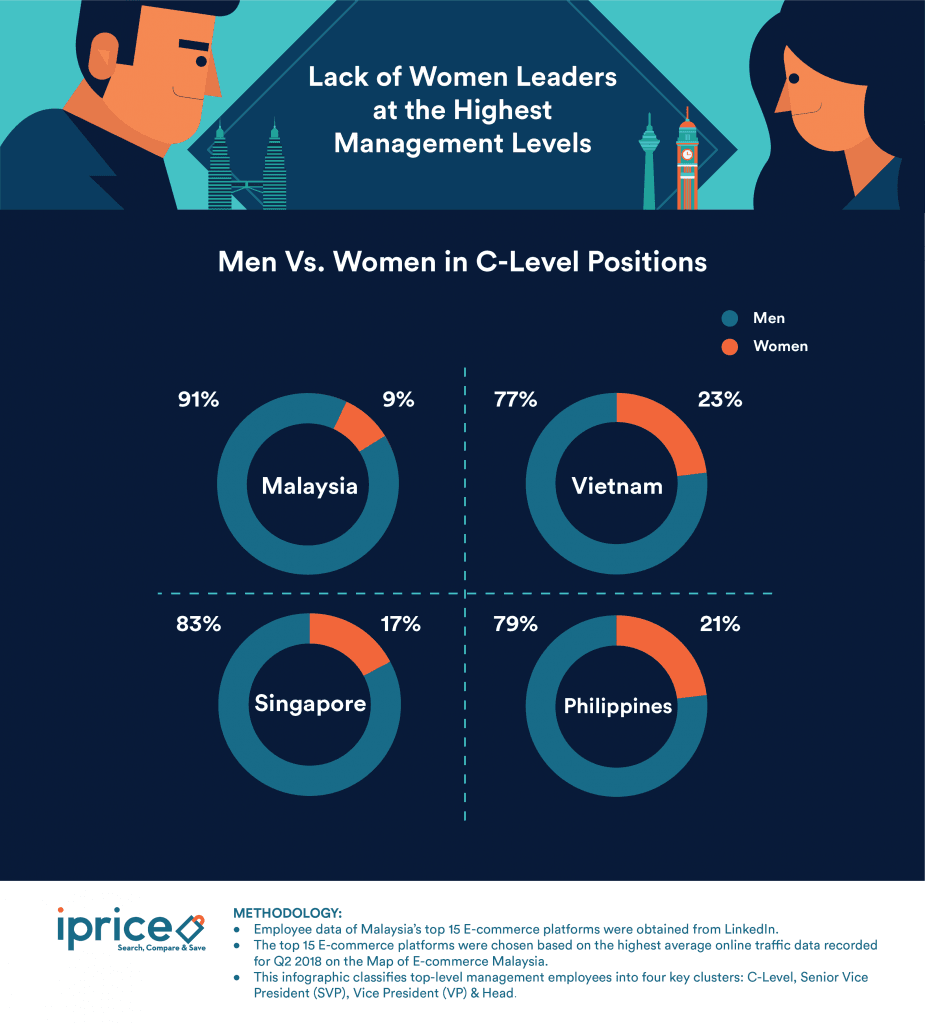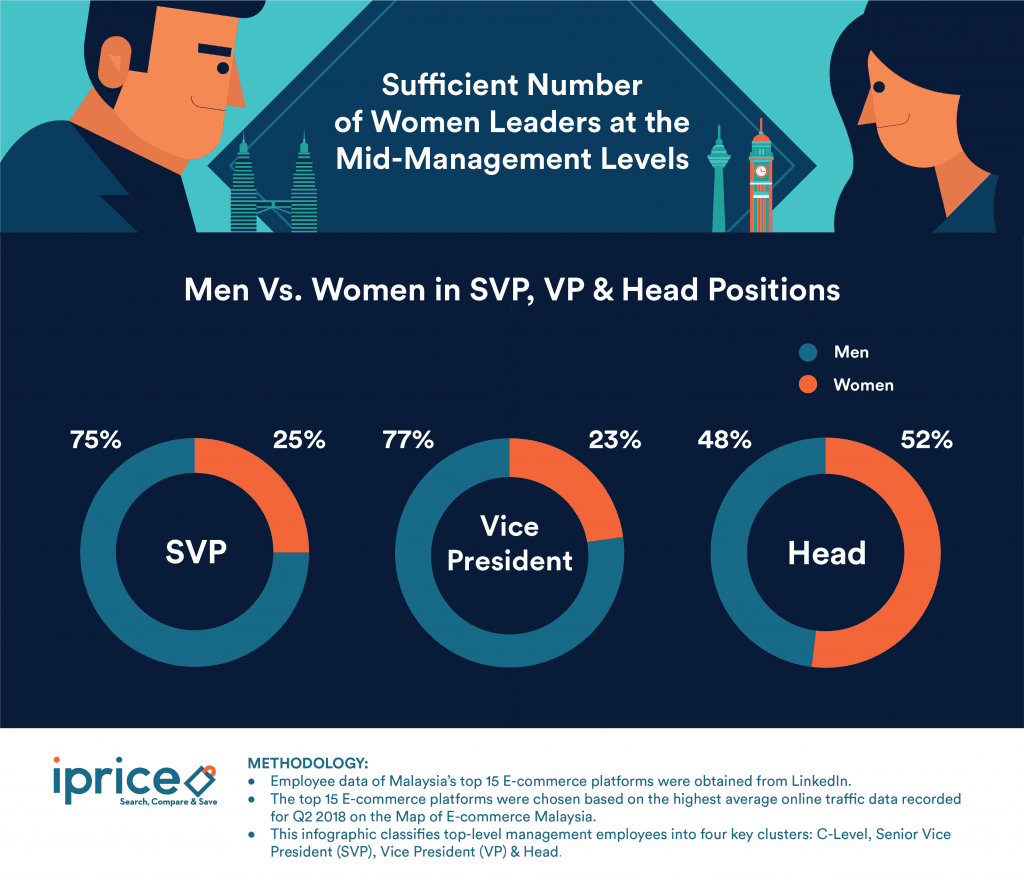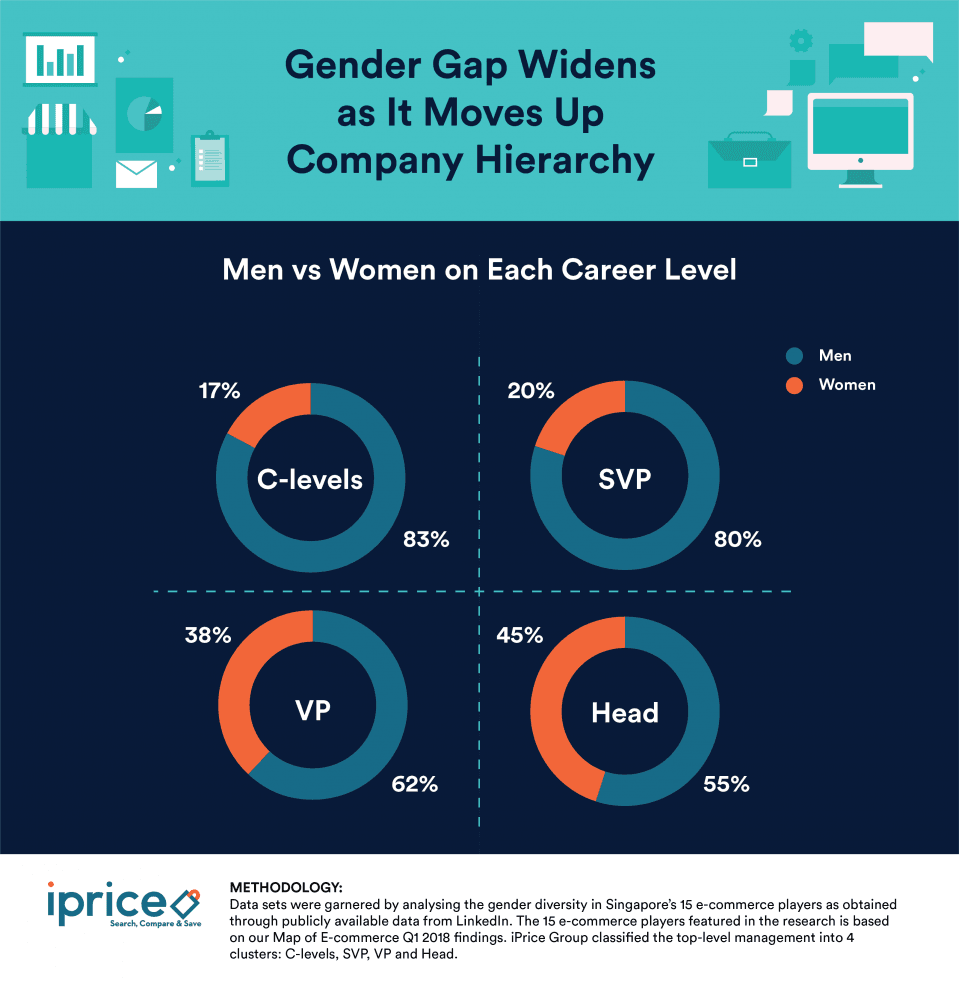How the disparity of women can be a roadblock to realizing the full potential of ecommerce
Q2 hedge fund letters, conference, scoops etc
Within the span of less than a year, both Singapore & Malaysia made history in the political arena with women appointed at vital governmental positions for the first time. In Singapore, Halimah Yacob was elected the President of Singapore while Dr. Wan Azizah was officially made as the first women deputy prime minister in Malaysia. This major milestone for women wasn’t just for the two countries but for Southeast Asia as well where only 30 women per-every 100 men are in leadership positions.
This is especially vital for ecommerce, who in recent years received much limelight when giants such as Google & Temasek predicted that the internet economy is slated to be worth more than US$8.2 billion in Malaysia and US$5.4 billion in Singapore by year 2025. The bright future of ecommerce was further lit up when Amazon entered Singapore mid-2017 and Alibaba establishing the first Digital Free Trade Zone (DFTZ) outside of China in Malaysia.
While there is no lack of technology and investment in ecommerce, it is paramount that consumers of different demographics are represented in the top levels of its managerial team in order to fully realise the full potential of the industry. But as we looked into the private sector of ecommerce, we noticed there was a lack of women leaders in top ecommerce companies from Singapore & Malaysia.
More Men Than Women at the Highest Management Levels
To derive our findings, we analysed more than 600 employees in managerial positions from Singapore & Malaysia’s top 15 most visited ecommerce platforms of Q2 2018. We found that there were more men than women at the highest management levels. Only 17% of women in Singapore and 9% of women in Malaysia were in C-level positions. What was more interesting was that there were more women in C-level positions in Vietnam at 23% and Philippines at 21%.
More so, women currently hold a big share of Malaysia’s demographic today. The Malaysian Communications & Multimedia Commission highlighted that 57% of online shoppers today are women. A similar percentage is seen in Singapore as well.
This makes it paramount that women’s views should be represented at vital decision-making stages of ecommerce platforms. People crafting technology have the power to influence how it works & it requires the minds of various demographic to maximise its effectiveness to all consumers. Hence, gender diversity is important for the people who make & use technology.
Much can be learnt from Philippines who has consistently performed as one of the most gender-equal workplace in the world. Philippines took the helm in Southeast Asia with the highest number of women in leadership, technical and professional roles as seen in the Global Gender Gap Index.
The Philippines fared well in the political empowerment of women specifically on women handling managerial and executive positions and labour force participation. The rationale for these findings is in the general upward mobility of women in the Philippines which makes its talent pool robust. For instance, the country’s legislature, Magna Carta of Women Act in 2009 promotes gender equality in government by mandating quotas for the proportion of women in government jobs. The same legislature has encouraged the private sector to follow the trend.
A Blockage at the Career Pipeline
As we looked at the lower management levels, we noticed there was no lack of women in the workforce. In Malaysia’s top e-commerce platforms, 25% of women held Senior Vice President (SVP) positions, 23% held Vice President (VP) positions & 48% held Head career levels. In Singapore, 20% of women held SVP positions, 38% held VP positions and 45% held Head career levels. Women are well represented at mid-management levels, but very few carried on to reach the highest management levels.
In Malaysia Hannah Yeoh, the Deputy Women, Family & Community Development Minister stated that the number of women taking up tertiary education courses is increasing but this is not reflected in higher level positions at the workplace.
To reduce the disparity of women on these levels, Yeoh stated that there is a need to empower the rights of women & recognise the importance of their roles. The deputy minister went on to state that the private sector should emulate the Government’s announcement to open childcare centres in every office in 2019.
This is relevant to the private sector in Singapore as well. Meggy Chung, Director at Citibank Technology Infrastructure said that that more work needs to be done to bridge the gender gap, particularly for women holding leadership positions in technology given that such roles are predominately male dominated.
Chung, who is also the chairman of Women in Tech@SG said, “We hope to educate and more importantly, make a positive influence on our next generations, such as students of polytechnics and universities, on their career choices with a view to encourage them to join the technology field”
***
This is an expert article by iPrice Group
Efforts E-commerce Businesses Need to Undertake to Reduce the Disparity of Women at Top Management Positions
If ecommerce platforms are serious in realising the billion-dollar future as predicted by Google & Temasek, businesses must play an active role in championing gender diversity. It is also no secret that women are being paid lesser than their male counterparts. In Singapore, the Ministry of Manpower stated that the median male monthly salary was at S$3,991 and women at S$3,382, which is at about 18% difference.
To work towards a solution, employees should offer salaries that is grounded on the job scope and not the salary history. This was echoed by a spokesperson from HireRight since employees has found it difficult to offer women higher salaries due to their previous pay-check.
Mirroring success from the United Kingdom, the number of women on boards increased from 12% in 2010 to 26% in 2017 by having prominent chairmen championing for diversity within the company & externally. To bridge this gap, e-commerce businesses must acknowledge the lack of women at top management levels as a real issue and take practical steps to overcome it.
Last year, the Malaysian government set the target for PLCs to have at least 30% women at board level by the year 2020. Likewise, Singapore’s Diversity Action Committee (DAC) has set the target for PLCs to have a share of women's participation at 30% by 2030. A similar target should be set by e-commerce businesses if they are serious in reducing the gender disparity.















